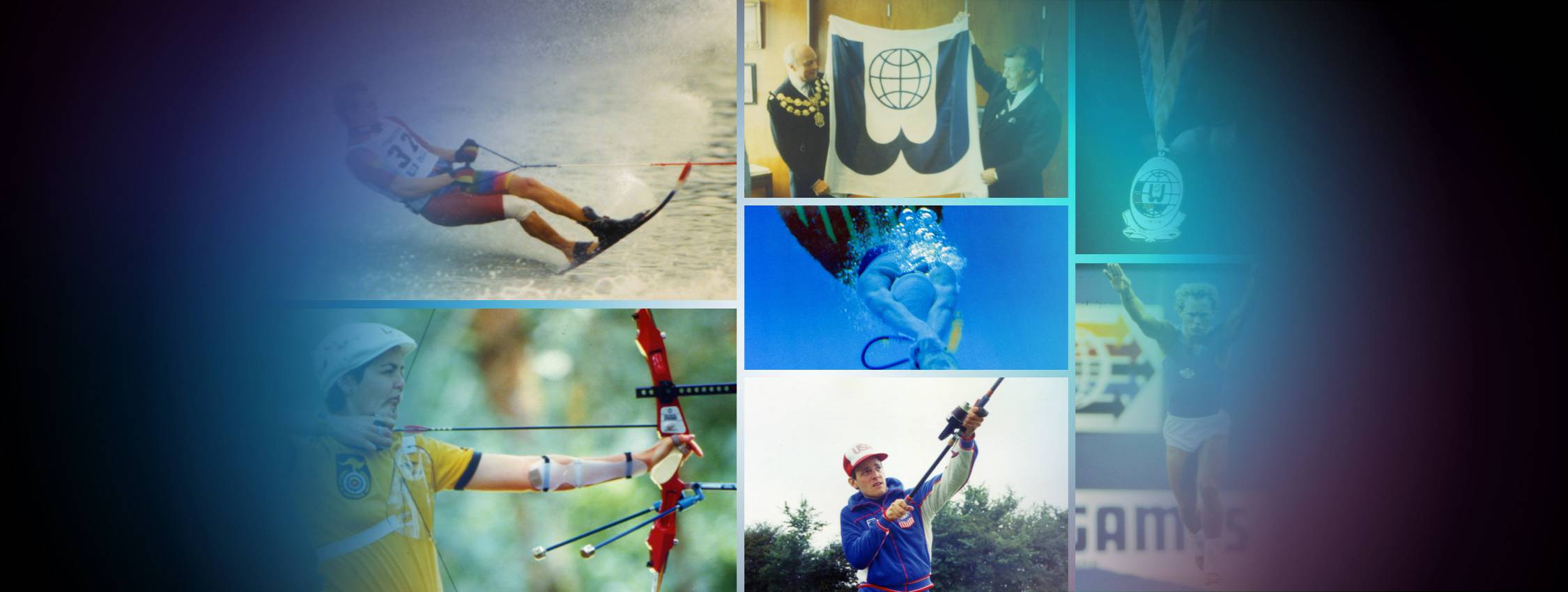Jürgen Kolenda’s Record
For the first time in Europe: the second edition of The World Game took place in London (Great Britain) from 25 July to 4 August 1985. And the event set two records: The finswimmer Jürgen Kolenda won seven gold medals. If the four World Games titles are added to the games in 1981, the German wins a total of eleven gold medals. This makes him the most successful World Games athlete of all time. Kolenda, born in 1961, passed on his knowledge as a star in his discipline and wrote a book about finswimming. For his achievements he received the Silver Laurel Leaf, the highest national award for athletes in Germany.
The games in London were also unique in another way: Among the 21 sports on the official program was Sombo. (The martial arts sport is related to Jiu-Jitsu.) Five other sports, which now have a fixed place in the timetable of The World Games, use this platform for the first time: Field Archery (non olympic discipline from Archery- at that time FITA), Boules, Fistball, Korfball and Lifesaving. Netball also made its debut, but was on the program for the last time in 1993. As an invitation sport Motorsport was represented with the disciplines Speedway and Indoor Trial.
A total of 1370 athletes from 51 countries competed in 134 medal events for the gold medal of the World Games. A total of seven competition venues were used. The majority of the indoor events used the Crystal Palace National Sport Centre, named after the famous exhibition hall, but not with the same stylish appearance. The main outdoor venue was the Copthall Stadium in North-West London. The World Games were opened in 1985 by Charles Palmer, Chairman of the British Olympic Association.
In the run-up to the event, the World Games Council, organizer of the TWG 1981, had reorganized itself and now called itself Internationen World Games Association. London became the host for the second Games for a certain reason. The West Nally Group had provided finances for the initial pilot World Games in Santa Clara; in return they became the owners of the rights to the event. Patrick Nally, owner of the company, chose London, where the headquarters of his company, as the venue for the second edition and the first games under his direction. The West Nally Group had arranged for a television production company, Channel 4. It had also been able to distribute the summary programs to various European and American countries.
The organizers followed the basic principles which were set up for the premiere four years ago in Santa Calara. Only the best athletes of a discipline, nominated by the international associations, received the right to start. The performances during the games were of the highest level. It became clear that the athletes perceived The World Games as an important competition for their specific sport and discipline.
The organizers made use of existing venues which kept the budget affordable and followed the idea of a sustainable event long before the term became state of the art in the world of sport. Unlike in Santa Clara in 1981, the athletes were not invited for the entire duration of the games, but for the duration of their competitions. They had the same campus-style accommodation as in Santa Clara, now in the Royal Holloway College (University of London). As in 1981, the march in of the athletes at the opening ceremony was by sport, not by nation. This only changed in Duisburg in 2005.
One of the findings of the TWG 1985 was that the previously relatively unknown event in a metropolis like London could only attract limited attention by the residences. Nevertheless, 50,000 spectators attended the competitions: tree times more than at the games in Santa Clara. It was crucial that the sports brought their fans with them. Still, for the upcoming events the IWGA decided to stage The World Games in smaller cities which were easier to attract for this relatively new multi-sport event.












